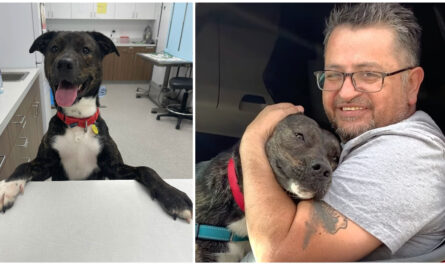As time goes by people’s stories tend to get buried in time — that was the case with our little war dog named Stubby. Despite his post-war stardom, Stubby has faded from memory in the century since the war commenced.
History books and stories of triumph in the past were more often than not reserved for those who made the biggest impact.
We rarely ever hear of those who made significant contributions but were not big enough to be constantly talked about or remembered. That’s why we’re here to shine a light on our furry friends who are history-makers in their own right.


Stubby’s story depicts the American Army as it prepared to fight its first modern war — and afterward, a bruised nation as it celebrated a triumph won at inconceivable human sacrifices.
WHO IS STUBBY?
Aside from what they know of him ever since he was found wandering the grounds of Yale University, specifically the university’s football stadium where the soldiers of the 102nd Infantry were doing their basic training before their deployment, no one knows where he came from — there are no records and not one person knows.
His breed was even something that people could not pinpoint at that time. They said he was a dog of uncertain breed, described in early news stories as either a Bull Terrier or Boston Terrier, with short stature, barrel shape, and friendly temperament.
In a paper, someone wrote this about him: “The brindle-patterned pup probably owed at least some of his parentage to the evolving family of Boston Terriers, a breed so new that even its name was in flux: Boston RoundHeads, American…and Boston Bull Terriers.”
BEFORE THEY LEFT FOR THE WAR


The dog’s fortunes changed from being a stray that wandered the streets of New Haven, Connecticut to an unofficial mascot of the 102nd Infantry Regiment (United States) and was assigned to the 26th (Yankee) Division in World War I.


In July 1917, he began hanging around a group of soldiers, members of the 102nd Infantry Regiment, as they trained on the grounds of Yale University. One soldier, in particular, developed a fondness for the little dog, Corporal James Robert Conroy (25 years old at that time). Ann Bausum, author of Stubby the War Dog: The True Story of World War I’s Bravest Dog, wrote that he forged the closest bond with the mutt. The two were soon inseparable.
Although the US military didn’t yet have an official ‘military working dog’ program, Stubby’s instincts and charm made him a firm favorite with the men of the regiment, who taught him how to raise his paw ‘in salute’.
OFF TO WAR
A few months after their troops had adopted Stubby, they were faced with the biggest question, what to do with the dog? Dogs, at that time, were forbidden in the U.S. military.
They soon had to leave for Europe and even though they managed to keep the stray as a pet during their three-month trying, bringing him along would be a daunting challenge.
When it came time for the unit to leave for France, Private Conroy decided to take the risk and stow the pup with him. The troops traveled by rail to Newport News, Virginia, a newly designated port of embarkation for soldiers heading to France. The 26th Division was slated to board one of the largest freighters navigating the Atlantic, the SS Minnesota.


Conroy did not want to leave Stubby behind, they had come this far and their bond was too strong for him to abandon the pup.
They boarded the ship, Stubby somehow managing to get past the ship guards. He was hidden under his overcoat without any detection. Conroy then spirited the dog down to the hold and hid him in the ship’s coal bin.
It wasn’t possible that Conroy could have kept Stubby out of sight and out of mind for too long. At some point during the turbulent Atlantic crossing, Stubby was found out. Many say that the dog charmed his way into staying aboard. When a commanding officer discovered Stubby’s presence, the dog responded by saluting him. The officer was reportedly rendered speechless by the gesture, allowing the furry dog to stay with them. Out of hiding and free to roam the freighter, Stubby proved popular with the crew. It was said that a machinist onboard fashioned Stubby his own set of metal “dog tags.”
By the time the troops disembarked in the port of Saint-Nazaire on France’s western coast, Stubby was the 102nd Infantry’s unofficial mascot.
PRESENCE AND SERVICE DURING THE WAR
For 18 months Stubby served with the 102nd Infantry Regiment and was involved in many battles while stationed overseas in the trenches in France. He participated in four offensive and 17 battles. It wasn’t easy for the pup, but he was a fighter just as much as his human counterparts. His sharp ears and ability to hear the whine of artillery shells before they landed were extremely useful, and Stubby was particularly helpful in locating wounded soldiers.


He was wounded several times, but he always came back fighting and boosting the morale of those he was alongside with.
They even made a special gas mask for his protection. He has then learned to warn his unit of mustard gas attacks.
One of his most notable actions was discovering a German spy. The incident was later relayed in Stubby’s half-page obituary in the New York Times:
“In the Chemin des Dames, Stubby captured a German spy and saved a doughboy [slang for a United States infantryman] from a gas attack. Hearing a sound in the stillness of the night, the dog, who guarded sleeplessly, stole out of the trenches and recognized–a German. Attempts by the Germans to deceive the dog were futile. Seizing his prisoner by the breeches, Stubby held on until help arrived.”
Following the retaking victory of the US, women of the town made Stubby a chamois coat upon which his many medals were pinned. He was later injured again, in the chest and leg by a grenade. He ultimately had two wound stripes.
POSTWAR LIFE AND MEMORIALIZATION
At the end of the war, Robert Conroy smuggled Stubby home. He was honored with a medal for heroism from the Humane Education Society – an animal protection organization – and met with presidents Woodrow Wilson, Calvin Coolidge, and Warren G Harding.


Harding officially received Stubby at the White House in 1921; in 1924, the dog passed the review for Harding’s successor, Calvin Coolidge, three times. When Conroy went to study law at Georgetown, Stubby became the university’s official mascot, a predecessor to the Hoya bulldog of the present day.
In March 1926, Stubby died in his sleep. After his death, he was preserved with his skin mounted on a plaster cast. Conroy later presented Stubby to the Smithsonian in 1956.
Stubby received a multiple-paragraphed obituary in the New York Times following his death in 1926. The obituary was half a page, much longer than the obituaries of many notable people of that time period.
There are various art dedicated to the memory of our little friend, but his story remains untold to the general public of today.
It was only recently that more people had heard of his bravery because of the animated film that was created in 2018, but not enough knowledge about it.
It is through retellings such as this, that help people remember.
If you enjoyed this, we have more stories about Dogs in History before this! Feel free to check them out.



